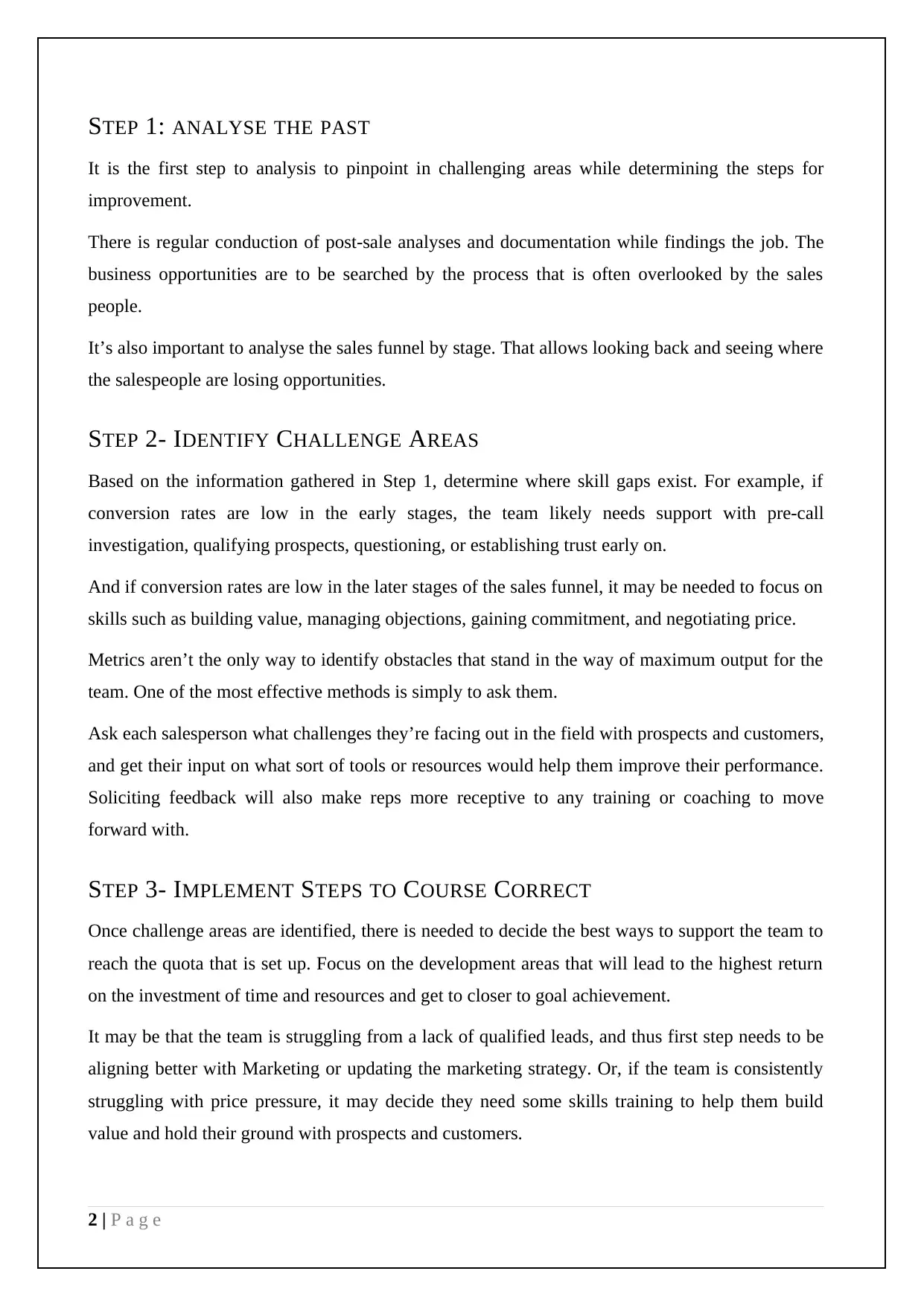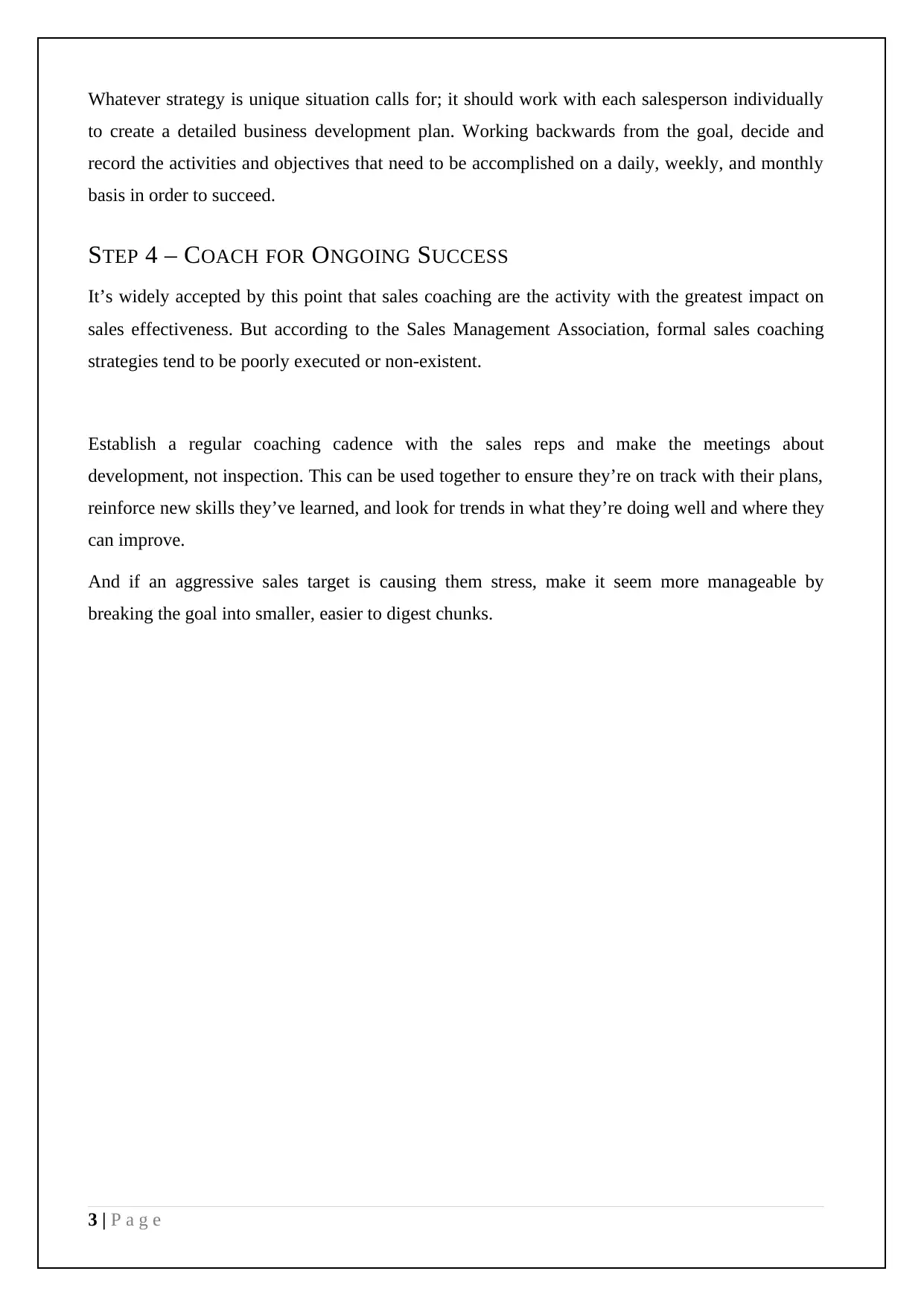Leadership: Team Analysis, Action Plan, Strategies - Course Report
VerifiedAdded on 2019/10/01
|3
|611
|184
Report
AI Summary
This report focuses on analyzing team performance and developing effective action plans within a leadership context. It outlines a four-step process: analyzing past performance, identifying challenge areas, implementing course corrections, and coaching for ongoing success. The report emphasizes the importance of identifying skill gaps, setting clear objectives, and providing targeted training. It stresses the value of regular coaching sessions focused on development, not just inspection, and recommends breaking down ambitious goals into smaller, more manageable steps. The report also highlights the need for aligning with marketing strategies to generate qualified leads and addressing price pressures through value-building techniques, ultimately aiming to improve sales effectiveness and overall team performance.
1 out of 3




![[object Object]](/_next/static/media/star-bottom.7253800d.svg)